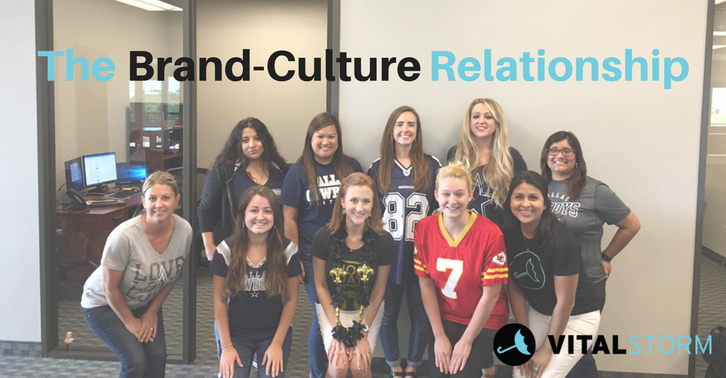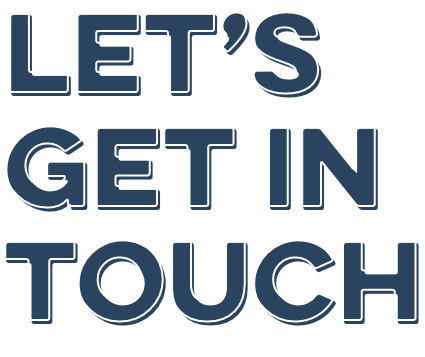The Brand-Culture Relationship
 After visiting Google in September 2014 and having the opportunity to experience the infamous Google culture firsthand, I was hit with a revelation. Like everyone else, what I knew of the Google culture was what I had read in books and articles. But after stepping foot on the campus in Mountain View, CA and spending time with actual Googlers, I discovered a new understanding about the Google brand, and branding in general. As we were working to build VitalStorm, our eyes were set on building a solid brand as well as a great culture. My revelation after leaving Google was that “brand” is born out of culture. These aren’t two separate entities. These should not be separate endeavors. One comes from the other.
After visiting Google in September 2014 and having the opportunity to experience the infamous Google culture firsthand, I was hit with a revelation. Like everyone else, what I knew of the Google culture was what I had read in books and articles. But after stepping foot on the campus in Mountain View, CA and spending time with actual Googlers, I discovered a new understanding about the Google brand, and branding in general. As we were working to build VitalStorm, our eyes were set on building a solid brand as well as a great culture. My revelation after leaving Google was that “brand” is born out of culture. These aren’t two separate entities. These should not be separate endeavors. One comes from the other.
This was evident in the Googlers I spent time with on my visit. They believed in Google, more than just a trusted search engine with cool corporate offices and free lunches and nap pods. They believed they were a part of something larger than life. Google’s mission is to “organize the world’s information and make it universally accessible and useful.” Not only did the Googlers who hosted us that week believe in this mission, but it was apparent that they were also truly inspired by it as well.
Returning home from what became an impromptu cultural pilgrimage, I soon experienced another example of the brand-culture relationship while I was standing in line at a Jimmy Johns. I had already been to this sandwich shop a couple of times before. Each time, I recalled their slogan: “Freaky Fast,” as my order was ready just seconds after I had swiped my debit card. I remember thinking, “Wow, that was fast!”
But on this visit, I found myself standing in a longer than usual line. I thought nothing of it, but noticed a Jimmy Johns team member shifting around nervously out of the corner of my eye. While I was standing there, waiting to order, this team member walked out from behind the counter where he stood to prepare the sandwiches and approached me in line. He asked, “What can I get started for you.”
It was obvious; this team member just could not accept the fact that I had to wait in a “slow” line. I thought just then, this kid gets it! He truly believes in “Freaky Fast!”
Behind The Brand
In The Brand Gap, Marty Neumeier reduces the definition of branding down to its most simple form by stating, “A brand is a gut feeling.” I believe this gut feeling or perception starts with those closest to the company – the employees. People create the products. People write the code. People interact with customers. If the employees aren’t sold on it, the customers certainly won’t be.
Howard Shultz wrote in Pour Your Heart Into It: How Starbucks Built a Company One Cup at a Time: “Authentic brands don’t emerge from marketing cubicles or advertising agencies. They emanate from everything the company does.” I would take this further and say that a company’s brand is a reflection of its culture.
Thinking departmentally about VitalStorm, we need to marry the concepts of HR and branding. Bill Taylor, a writer for the Harvard Business Review, put it this way: “The new ‘power couple’ inside the best companies is an iron-clad partnership between marketing leadership and HR leadership. Your brand is your culture and your culture is your brand.” Bill’s article, Brand is Culture, Culture is Brand, is a must-read for anyone in charge of branding at their company (read it here). Although individuals with different skillsets run these departments, they must align under the same vision.
If human beings are behind our products and services, we as leaders must be behind our people. We set the bar with our devotion to the cause and mirror that in how we treat our people. In-turn, our people will translate that to their work and customer relations. What do we want our customers to know about us? This is what we need to cultivate in our people at VitalStorm.
Behind The Culture
What I’ve learned from companies with outstanding culture isn’t that you should necessarily set out to just build your own version of company culture. It seems, from observing their success, that culture is “cultivated” from the hearts of those on your team. Therefore, as leaders our efforts should be around getting the right people on the bus, as Jim Collins would say, then pulling out of their hearts the core values to work and live by. As their leader, our job now becomes casting vision and protecting this culture.
If we can pull the right things out of our people at VitalStorm, our culture will take shape. Once our culture takes shape, our brand will emerge. And if we can continue to cultivate that culture, our brand will stick.
Start Competing. Track Performance. Get Results.
Keep in touch with us on Facebook, Twitter, and Google+ for the latest digital marketing news and information.

